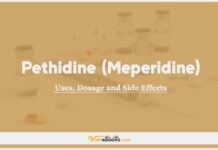Robenacoxib In Dogs & Cats: Uses, Dosage and Side Effects

Overview
- Mechanism of Action: Robenacoxib selectively inhibits the COX-2 enzyme, which reduces the production of prostaglandins involved in inflammation.
- Tissue Selectivity: Robenacoxib is considered tissue-selective, meaning it has a preference for distribution and concentration at sites of inflammation within the body.
- Short Half-Life: It has a short half-life in plasma, approximately 2 hours, which suggests that it is rapidly metabolized and eliminated from the bloodstream.
- Advantages: The combination of tissue selectivity and a short half-life may offer potential advantages, as it may reduce the exposure of target organs like the liver and kidneys to robenacoxib over a 24-hour dosing interval.
- Clinical Data: However, it’s important to note that there may not be sufficient clinical data to fully support these potential advantages at this time. Further research and clinical studies may be needed to confirm these benefits.
Uses of Robenacoxib
- Alleviation of inflammation and pain in both acute and chronic musculoskeletal disorders.
- Reduction of postoperative pain and inflammation following orthopaedic and soft tissue surgery in dogs.
- Treatment of acute and chronic musculoskeletal pain and inflammation in cats.
Dose of Robenacoxib in Dogs and Cats
Dogs, Cats:
- 2 mg/kg s.c. q24h for a maximum of 2 doses; 1–2 mg/ kg p.o. q24h.
- Monitoring of long-term treatment (>12 weeks) is recommended in cats and dogs.
Drug Dosage Calculator
You Should Give:
Side Effects of Robenacoxib in Dogs and Cats
- GI Side Effects: Gastrointestinal (GI) signs are commonly reported in animals taking NSAIDs, but most cases are mild and resolve without treatment. If GI signs persist beyond 1–2 days, it’s advisable to discontinue therapy.
- Individual Sensitivity: Some animals may develop GI signs with one NSAID but not with another. Therefore, a 3–5-day wash-out period is recommended before starting therapy with a different NSAID if needed.
- GI Bleeding: If there is suspicion of GI bleeding while using an NSAID, therapy should be stopped immediately. GI bleeding can be a serious side effect.
- Cardiac Risk: While there is a small risk of NSAIDs precipitating cardiac failure in humans, the extent of this risk in animals is currently unknown. This emphasizes the need for careful monitoring and awareness of potential cardiovascular effects when using NSAIDs in animals.
- Liver Disease: In animals with liver disease, the metabolism of robenacoxib may be prolonged, increasing the potential for drug accumulation and overdose with repeated dosing. Careful monitoring and dosage adjustments may be necessary in such cases.
Contraindications of Robenacoxib in Dogs and Cats
- Do not give to dehydrated, hypovolaemic or hypotensive patients or those with GI disease or blood clotting problems.
- Administration of robenacoxib to animals with renal disease must be carefully evaluated and is not advisable in the perioperative period.
- Do not give to pregnant animals or animals <12 weeks (dogs), <16 weeks (cats) or <2.5 kg body weight (cats and dogs)
Some Notes:
- Surgical Analgesia: Administer the injectable preparation subcutaneously approximately 30 minutes before surgery to provide perioperative pain relief. One injection provides pain control for up to 24 hours.
- Perioperative Caution: Use all NSAIDs cautiously during the perioperative period, as they can potentially affect renal perfusion during hypotension episodes. If hypotension is expected during anaesthesia, delay robenacoxib administration until the animal has fully recovered and has normal blood pressure.
- Oral Dosing in Cats: For cats, the oral dose can be given directly into the mouth or mixed with a small amount of food. Avoid administering to dogs with food, as it may reduce efficacy.
- Care in Cats: Due to the longer half-life and narrower therapeutic index of NSAIDs in cats, be very careful to ensure accurate dosing and not exceed the recommended dose. Cats typically find the tablets palatable, which makes dosing easier.
- Treatment Duration in Dogs: If no clinical improvement is observed in dogs after 10 days of oral treatment, discontinue the medication.
- Avoid Concurrent Use: Do not administer robenacoxib concurrently or within 24 hours of other NSAIDs and glucocorticoids.
- Avoid Nephrotoxic Agents: Avoid administering robenacoxib with other potentially nephrotoxic agents, such as aminoglycoside antibiotics.
Tip
Do You Want To Increase Your Veterinary Knowledge and Practical Skills?
You Can Now Browse and Download +3000 Books For Veterinary Professionals & Students Online.
Download Veterinary Books




















